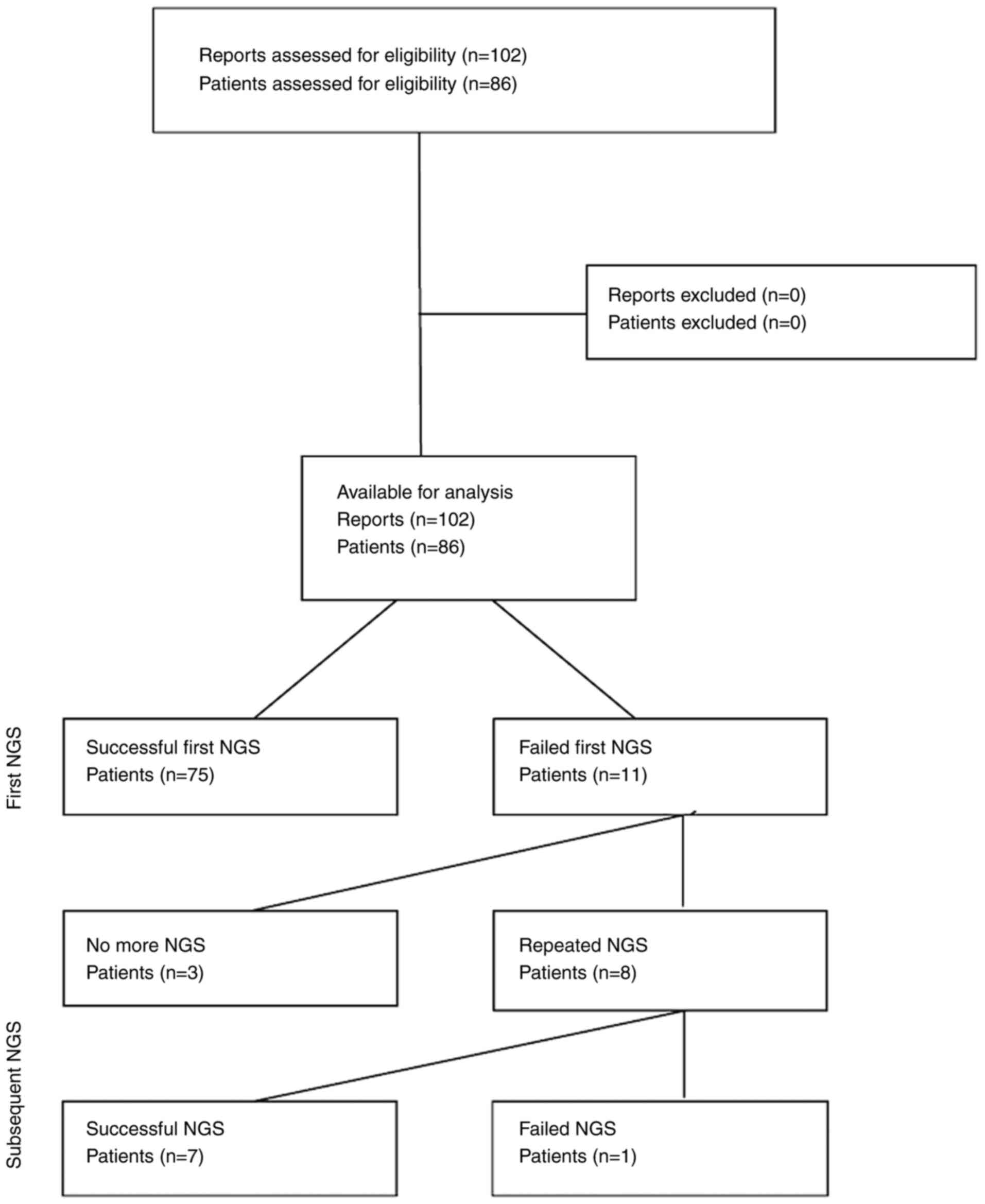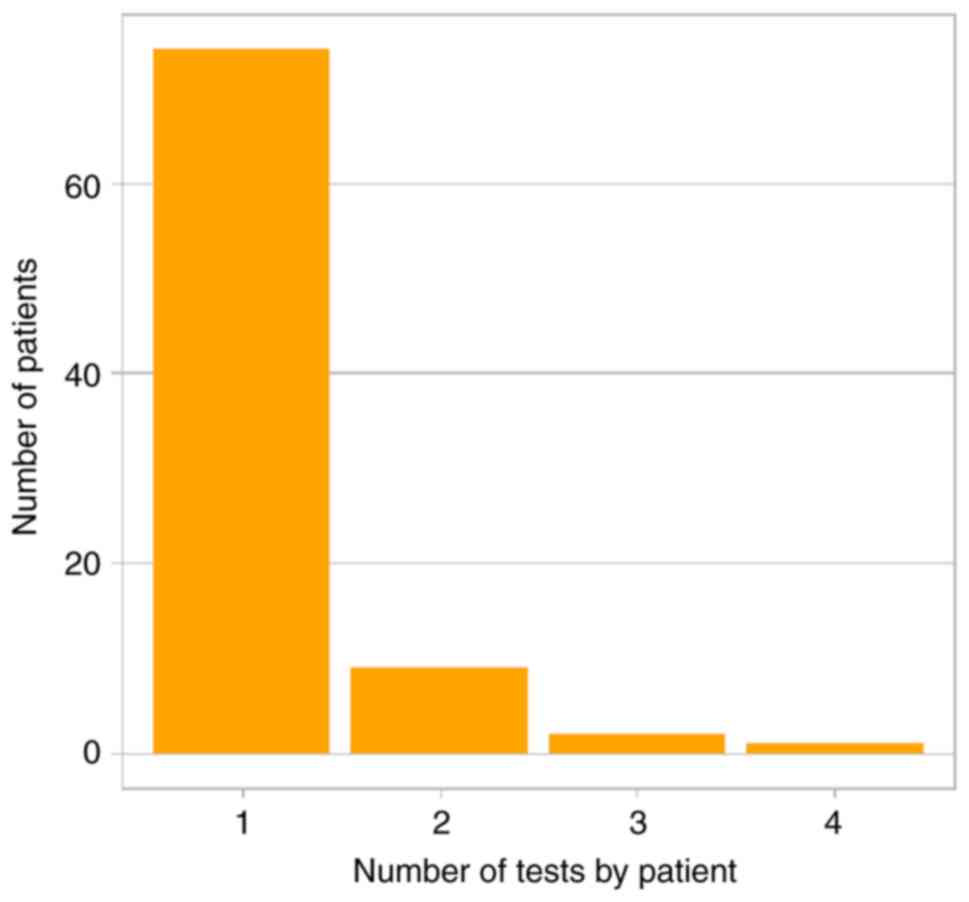Next‑generation sequencing failure rates in rare tumors: A real‑world single‑institution analysis
- Authors:
- Published online on: March 18, 2025 https://doi.org/10.3892/mi.2025.226
- Article Number: 27
-
Copyright : © Itkin et al. This is an open access article distributed under the terms of Creative Commons Attribution License [CC BY 4.0].
Metrics:
Total
Views: 0 (Spandidos Publications: | PMC Statistics:
)
Total PDF Downloads: 0 (Spandidos Publications: | PMC Statistics:
)
Abstract
Reported next‑generation sequencing (NGS) failure rates vary widely and are primarily based on studies of common tumor types. The present study aimed to estimate NGS failure rates in rare tumors and their association with preanalytical variables and sequencing methods in a single institution. Patients with sarcomas, rare carcinomas, and rare melanomas who underwent NGS between January 2022 and October 2023 were eligible for participation in the present study. NGS was performed as whole exome/transcriptome sequencing (WETS) based on hybrid capture or multigene commercial targeted panel. Clinicopathological and NGS‑related data were extracted from clinical charts. Univariable logistic regression models were constructed with the outcome variable NGS failure and the following explanatory variables: Assay, sampling method, tissue type , and storage time. A total of 102 NGS reports from 86 patients with sarcomas (73.3%), rare carcinomas (16.3%), and melanomas (10.5%) were included. The median age of the patients was 40 years [interquartile range (IQR), 23‑61 years]. Samples were obtained by biopsy (51%) and surgery (48%) and were collected from soft tissue (92.1%) or bone (7.9%) lesions. The median storage time was 2.5 months (IQR, 1.3‑4.6 months). Targeted panel and WETS were used in 39.2 and 60.8% of reports, respectively. NGS failure due to insufficient material quantity or quality was observed in 14.7% of tests, corresponding to 4.7% of patients. Repeated testing was successful in 7 out of 8 patients. WETS was significantly associated with a higher probability of NGS failure due to the insufficient quantity or quality of material compared to targeted panel (odds ratio, 11.4; 95% confidence interval, 1.4‑90.4; P=0.022). In summary, our findings suggest that the NGS failure rates in rare tumors are comparable to the rates reported in prevalent neoplasms. WETS can be associated with more frequent NGS failure than targeted panel. Retesting can often overcome the initial NGS testing failure.











